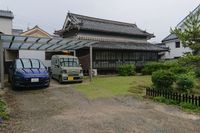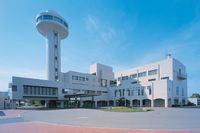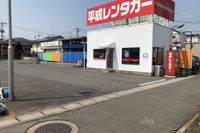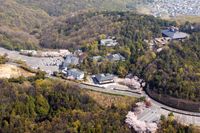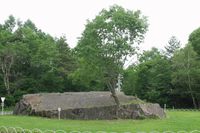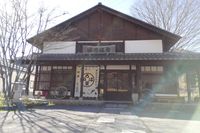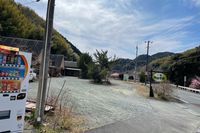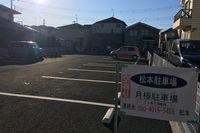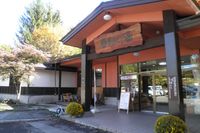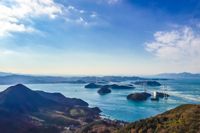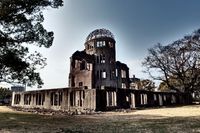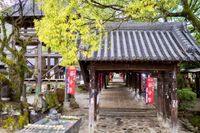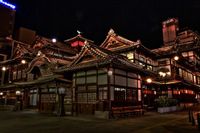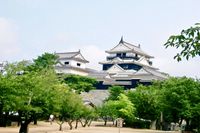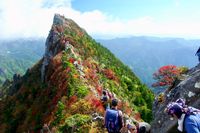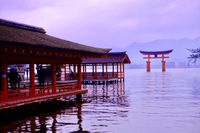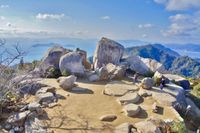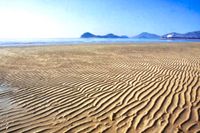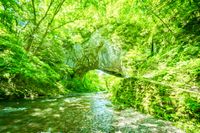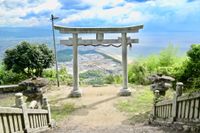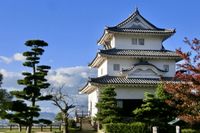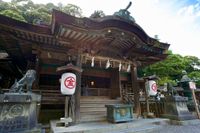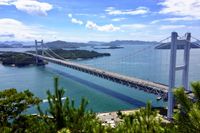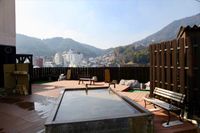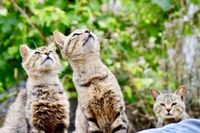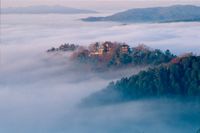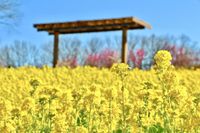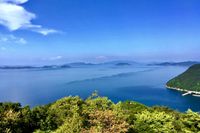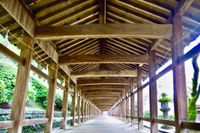Okunoshima Island
広島県/竹原市

Description
This is an island of Hiroshima in the Seto Inland Sea. It is famous as the only island that is home to a factory producing poisonous gases, and is home to around 700 rabbits that had previously been used for scientific experiments. It is a well known tour spot with plentiful facilities including a camping area, leisure facilities and onsen.
Homepage
Address
Nearby Car Night Spots
Nearby Activities
There is no nearby activities
Ranking Stations
Shin Meishin Suzuka PA (inbound) RV Station Suzuka * With Power!
¥2,200〜
/ per nightMie Yamamotocho, Suzuka-shi
4.3
(139)Omachi Hot Spring "Yukemuri Estate: Yakushi no Yu"
¥500〜
/ per nightNagano Ken Taira, Omachi Shi
4.1
(27)Nearby Drive Spots
Setouchi Shimanami Kaido
This is a road of 59.4 km connecting Hiroshima Onomichi City and Imabari City in Ehime prefecture. There are six large islands in the area, which is also known as "the Bridge art museum" as ten bridges are linked here. It is popular as a cycling road, and bicycles can be rented here.
Atomic Bomb Dome
This building was the victim of the world's first atomic bomb during the World WarⅡ. It was originally opened as an establishment to display products of the prefecture. The bombing on August 6th led to the tragic destruction of 13.2 million square meters of land, a death toll of about 140,000 people, and is registered as a World Heritage Site in commemoration and remembrance of the tragedy, with the wish that such a tragedy will never happen again.
Ishiteji Temple
This is a temple of the Shingon Buzan sect, and built in 729 AD. The main object of worship is known as Yakushi Nyorai, and is said to be built based on the legend of the second coming of Emonzaburo. There is also a famous area where visitors walk along a long tunnel, where the buddhist ideas of the Taizo-kai (fertility and life giving) and Kongo-kai strength as hard as the toughest diamond, representing unwavering strength). It has also be awarded one star in the Michelin tourist guide.
Dogo Onsen
This is Japan's oldest onsen hot spring town with 3000 years of history, situated in Matsuyama city. It has been cherished by many emperors over the years, including nobles such as Prince Shotoku, as well as cultural influencers such as Kobayashi Issa and Natsume Soseki. There are plentiful food and drink establishments, including the Dogo Onsen center at the center. ※Credit:旅と温泉の無料写真素材 おんふぉと http://on-photo.com/
Matsuyama Castle
A castle built in 1603 by Kato Yoshiakira, it is one of Japan's 12 remaining castle towers, and was awarded 2 stars in the Michelin tourist guide. It was Japan's last complete castle tower to be built, and symbolizes the Momoyama era(1568-1600) culture in which it was built. In the morning of the weekends, one can see the traditional "castle drumming" which was originally used to escort people quickly into the castle.
Ishizuchi Shrine (Head Shrine)
This is a shrine that allowed Mount Ishizuchi to be considered a holy mountain, in 685 AD. It is one of Japan's seven worshipped mountains, with Ishizuchihiko no Mikoto as the shrine God. It is also the shrine set at the highest altitude is west Japan, at 1,982 meters. In particular, there is a very steep part of the hill, for 230 meters, where it can be only climbed by using the chain, which provides an intense experience that taps into the survival instincts.
Itsukushima Shrine
A shrine built in 593 AD, by Saeki Kuramoto, and registered as a world heritage site. The main Gods are known as the Munakata three goddesses Ichiki Shima Hime, Takiribine no Mikoto and Tazukihime no Mikoto. It was famous for being worshipped by the Taira clan, and under the instruction of Taira Kiyomori, a military leader, large Torii gates were built which appear to float in the water. It is known as the "Aki no Miyajima" and is known as one of Japan's three greatest viewpoints. Along with Kasuga Taisha and Kehi Jingu shrines, the Torii gates are officially classified as one of the three greatest in Japan.
Mount Misen
This is a mountain registered as a World Heritage Site along with Itsukushima Shrine. In 806 AD, the great teacher and poet Kukai opened this mountain as a place of reverence and worship. There were also several stones known as Iwakura which were objects of Shinto worship, and has therefore been known as a long standing place of reverence and worship, consistently drawing in visitors.
Chichibugahama Beach
This is a sandy beach facing the Setouchi coast in the western part of Kagawa prefecture. With its stunningly clear salt waters, it is known as the "heavenly mirror" as it is an ideal photo spot to take a picture of a landscape, with it faithfully reflected by the sea. This has made the area particularly popular for photographers, as well as holidaygoers who visit the area in the summer for beach and water activities.
Taishakukyo Gorge
This is a canyon of 18 km in length in the eastern part of Hiroshima prefecture. It is famous for its natural bridge, Onbashi, formed by the erosion of limestone over the years by river water. In addition, in Lake Shinryu, there are numerous stunning views such as the greenery in spring, the autumn leaves, and the numerous water birds that inhabit the area.
Takaya Shrine
This shrine hosts the Gods known as Ninigi no Mikoto, Ukemochi no KamiKonohano-sakuyahime no Mikoto, with the main shrine hall at the top of the 407 meter Mount Inazumi. Its construction date is known. From the top area (which is 270 steps up) visitors can see views of the whole of Kannonji Temple along with the Setouchi coast, which has given the shrine the alternate moniker of "The heavenly Torii gate". Night views are equally as stunning, drawing numerous photographers to the area regardless of the time of day.
Marugame Castle
This is a castle which was built in 1602 by Ikoma Chikamasa. It is one of Japan's 12 remaining castle towers, and is famous for being built on Japan's tallest castle stone hill of 66 meters, giving it the name of the "stone castle". Visitors can also see a wooden model of the castle which was originally created as a proposal submitted to the Edo Bakufu Shogunate.
Konpira Shrine
This is the main shrine of the Konpira Shrine group, but its construction date is not known. It hosts the Gods known as Oomononushi no Mikoto and Emperor Sutoku, and is particularly revered by fishermen and mariners, due to the temple Gods acting as protectors for those at sea. The shrine has enjoyed popularity due to its unique souvenir of a gold emblem being imprinted onto a circular trinket. The path up to the temple is long, with 1368 stone steps.
Mount Washu
A 133m high mountain situated in Kurashiki City. Facing the Seto Inland Sea, it has an observation platform with views of the entire Great Seto bridge as well as numerous islands. It was named due to its resemblance to an eagle spreading its wings There is an ancient tomb between the middle of mountain and the summit which is a particular highlight.
Konpira Onsen
An Onsen built in 1997, situated in the western part of Kagawa prefecture, this is often a stop off spot for those visiting the shrine of Konpira Shrine. The local area is known for its special production of udon, with many restaurants serving unique types of udon noodle, as well as a Japanese sake museum built from a sake storage facility.※Credit:旅と温泉の無料写真素材 おんふぉと http://on-photo.com/
Aoshima Island
This is an island on the Setouchi coast, in Ehime prefecture. It is also known as the cat island due to the approximately 100 wild cats that live on the island, which has made the area popular in recent years, and of course, particularly so for cat lovers! However, it is important to be aware that there are no lodging or food facilities at all - even vending machines!
Bitchu Matsuyama Castle
This is a castle built in 1240 by Akiba Saburo Shigenobu. It is situated at the top of the 430 meter tall Mount Gagyu, and among Japan's remaining castle towers, is located at the highest location in Japan. During the battle of Bicchu in 1574, the large castle walls were built, and became a great fortress stronghold. During the months of October to April, it is possible to see the clouds below, giving it the alternate nickname of "The heavenly castle".
Sanuki Mannou National Government Park
This is Shikoku's only nationally governed park, located in Kagawa prefecture. The park contains natural habitats for animals, a flower garden and an auto camping area. The area is particularly popular as a seasonal park as there are various varieties of flowers for all seasons, and for which there are seasonal festival events held regularly throughout the year.
Goshikidai Plateau
This is a mountain that protrudes out into the Setouchi coast, located in Kagawa prefecture. The name originates from a Chinese legend, and there are five mountains named with the colors of red, yellow, blue, black and white, hence the name "Go-iro" which means "5 colors". The Shiromine Temple and Negoro Temple, which were recognized by the Japanese poet and author Kukai as one of the "88 holy places of Shikoku" is also nearby. The mountain and coastal area also give way to stunning views.
Kibitsu Shrine
A shrine whose construction date is unknown. The main shrine God is known as Ookibitsu no Mikoto, and was revered as the great shrine of the Kibikuni area (which included Okayama, Hiroshima and parts of other areas). Ashikaga Yoshimitsy, who instructed the construction of the shrine, is said to have used the "Hiyoku Irimoya Zukuri" style, which a traditional Japanese Shinto architectural style characterized by four dormer gables, two per lateral side, on the roof of a very large main shrine. The place was designated as a national treasure and is famous for its 398 meter long passageway It is also famous for being the setting of the legend of "Ura Taiji" featured in Japanese folt tale "Momotaro(The peach boy)".

